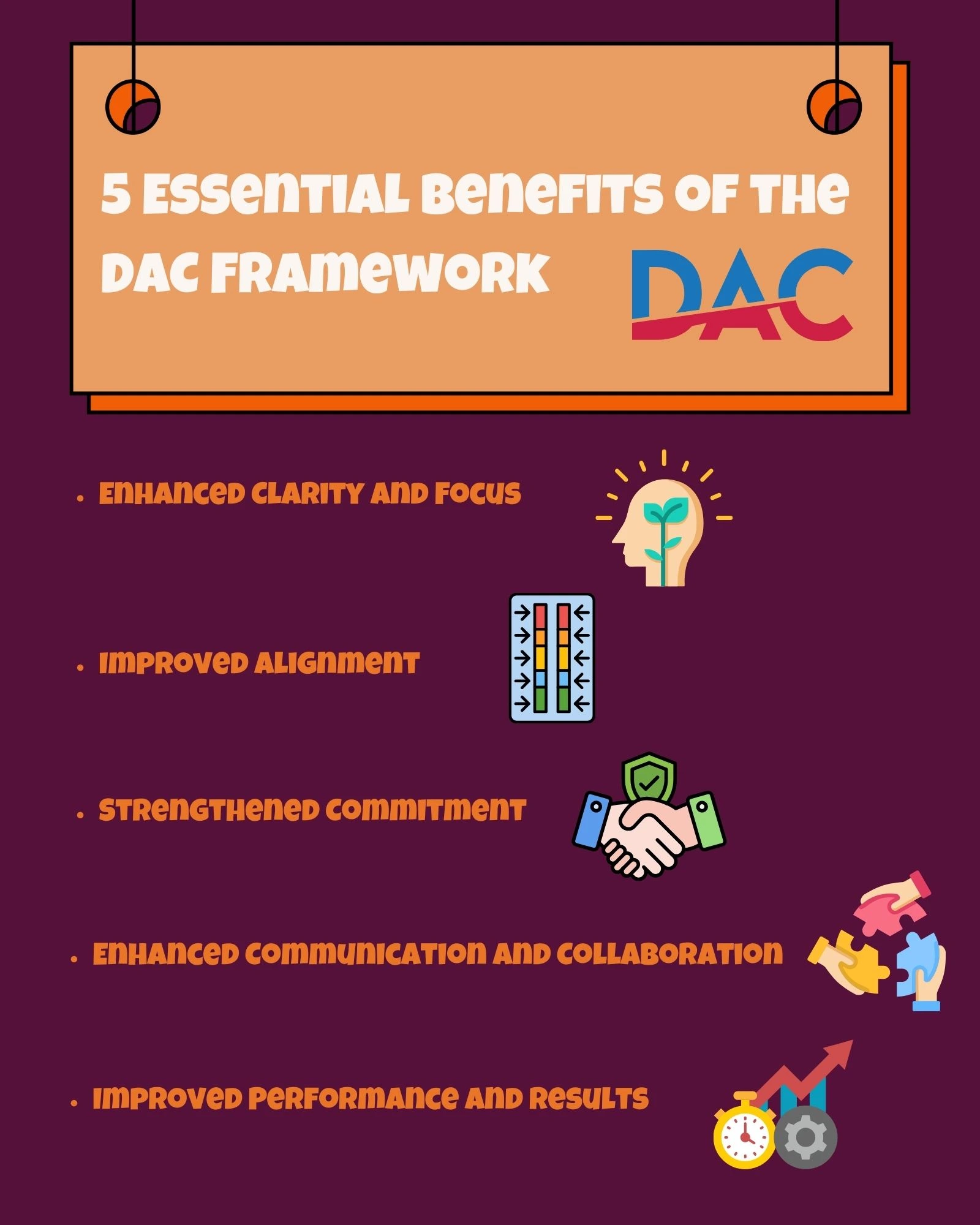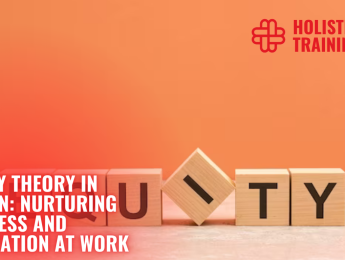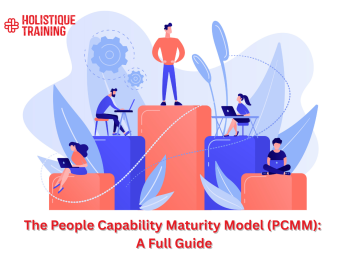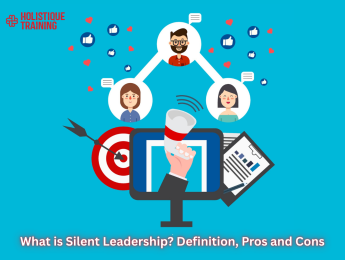- Table of Contents
- What Is the DAC Framework?
- The Three Pillars of the DAC Framework
- 1. Direction
- 2. Alignment
- 3. Commitment
- 5 Essential Benefits of the DAC Framework
- Enhanced Clarity and Focus
- Improved Alignment
- Strengthened Commitment
- Enhanced Communication and Collaboration
- Improved Performance and Results
- DAC Tools: Instruments for Success
- Applying the DAC Framework as a Leader: A 4-Step Guide
- Step 1: Establish Clear Direction
- Step 2: Foster Alignment
- Step 3: Cultivate Commitment
- Step 4: Sustain and Adapt
- The Role of Emotional Intelligence
- 1. Self-Awareness
- 2. Empathy
- 3. Relationship Building
- 4. Conflict Resolution
- 5. Adaptability
- 6. Trust and Credibility
- 7. Employee Well-being
- 8. Inspirational Leadership
- Leveraging Technology for DAC Implementation
- 1. Data Analytics and Insights
- 2. Communication Platforms
- 3. Performance Management Systems
- 4. Key Performance Indicators (KPIs)
- 5. Project Management and Collaboration Tools
- 6. Feedback and Survey Platforms
- 7. Learning and Development Platforms
- 8. Change Management Tools
- 9. Feedback Analysis and Sentiment Analysis
- Conclusion
Exceptional leaders can provide direction, align teams, and cultivate unwavering commitment. These qualities are the hallmark of successful leadership, and they are precisely what the DAC (Direction, Alignment, and Commitment) framework seeks to empower leaders with. This comprehensive exploration of the DAC framework will unravel its intricacies, delve into its practical applications, and uncover the secrets to thriving in today's competitive landscape.
What Is the DAC Framework?
The DAC framework, short for Direction, Alignment, and Commitment, is a structured approach that equips leaders with the tools they need to steer their organisations toward success. It offers a systematic way to establish clear direction, align teams and resources, and foster commitment to shared objectives. At its core, the DAC framework is built on the belief that when individuals are aligned with the organisation's direction and fully committed to its goals, they are more likely to contribute their best efforts and work collaboratively.
The Three Pillars of the DAC Framework
The DAC framework, short for Direction, Alignment, and Commitment, is not just a simple acronym but a powerful structure that forms the cornerstone of effective leadership. These three pillars serve as the foundation for leaders to build high-performing organisations. Let's delve deeper into each of these pillars to understand their significance:
1. Direction
Direction represents the first and fundamental pillar of the DAC framework. It involves crafting a clear and compelling vision for the organisation, defining its mission, and establishing specific strategic objectives aligning with this vision.
- Vision Statement: A vision statement is a concise yet inspiring declaration of what the organisation aspires to achieve in the future. It provides a sense of purpose and acts as a guiding light for all stakeholders. A well-crafted vision statement should be forward-looking and motivate individuals to work towards a shared goal.
- Mission: An organisation's mission defines its core purpose and the fundamental reasons for its existence. It answers the question of why the organisation exists and what it aims to accomplish. A mission statement should be concise, meaningful, and reflect the organisation's values.
- Strategic Objectives: These are the specific, measurable goals that the organisation sets to realise its vision and mission. These objectives are actionable and time-bound, providing a roadmap for the organisation's journey toward success. Effective strategic objectives bridge the vision and day-to-day operations, ensuring that everyone understands how their work contributes to the larger purpose.
Having a well-defined direction is like having a compass in a vast wilderness. It helps leaders and employees navigate the complexities of the business landscape, make informed decisions, and set clear priorities. Moreover, a compelling direction can ignite passion and enthusiasm among team members, motivating them to strive for excellence.
2. Alignment
The second pillar of the DAC framework, Alignment, ensures that individual goals, team objectives, and departmental initiatives are congruent with the organisation's strategic direction. Achieving alignment requires effective communication, coordination, and collaboration across different organisational levels and functions.
- Communication: Transparent and consistent communication is vital for alignment. Leaders must communicate the organisation's direction and provide clarity on expectations, priorities, and progress. This open dialogue helps employees understand how their work fits into the bigger picture and fosters a sense of belonging.
- Coordination: Coordination involves harmonising efforts across various teams and departments to prevent the development of silos. Leaders must encourage cross-functional partnerships and break down barriers that hinder collaboration. When different parts of the organisation work together seamlessly, resources are optimised, and the organisation becomes more efficient.
- Collaboration: Collaboration goes hand in hand with alignment. Leaders should foster a culture of teamwork and mutual support. Employees collaborating can leverage diverse perspectives and skills to solve complex problems and drive innovation. Collaboration also enhances adaptability, a crucial trait in today's dynamic business environment.
Alignment ensures everyone is on the same page and working toward a common goal. It minimises conflicts arising from conflicting priorities and maximises resource utilisation, increasing efficiency and productivity.
3. Commitment
The third pillar, Commitment, is the heartbeat of success within the DAC framework. Commitment encompasses the dedication, enthusiasm, and ownership individuals and teams demonstrate to achieve the organisation's goals.
- Inclusive and Supportive Work Environment: Leaders play a pivotal role in creating an inclusive and supportive work environment where commitment can flourish. This involves fostering a culture of trust, respect, and psychological safety. When employees feel valued and supported, they are more likely to invest their time and effort into the organisation's success.
- Employee Engagement: Engaged employees are committed employees. Leaders should actively engage with their teams, listen to their concerns, and involve them in decision-making processes. Engaged employees are likelier to go the extra mile and contribute innovative ideas.
- Recognition and Reward: Recognising and rewarding high performance is a powerful tool for nurturing commitment. Acknowledging and appreciating employees' efforts and achievements motivates them and reinforces the organisation's values and culture.
- Shared Sense of Purpose and Values: Leaders should articulate and communicate the organisation's values and purpose consistently. Employees' commitment strengthens when they identify with these values and share in the larger purpose. They see their work as meaningful and integral to the organisation's success.
Commitment creates a positive work culture where individuals are willing to invest their time and energy into achieving common objectives. It fosters a sense of belonging and loyalty, ultimately leading to higher employee retention rates and a more resilient organisation.
In summary, the DAC framework's three pillars—direction, Alignment, and Commitment—form a robust foundation for effective leadership. Direction provides the organisation with purpose and clarity, Alignment ensures everyone is working toward a common goal, and Commitment ignites the passion and dedication needed to overcome challenges and achieve success. By embracing and mastering these pillars, leaders can confidently navigate the complexities of the modern business landscape and drive their organisations toward remarkable achievements.
5 Essential Benefits of the DAC Framework
The DAC framework offers many benefits, all contributing to fostering a high-performing organisation. Let's explore these benefits in greater detail:

Enhanced Clarity and Focus
The DAC framework acts as a guiding light, illuminating the path forward for both leaders and employees. With a well-defined vision, mission, and strategic objectives, leaders can make informed decisions and set clear priorities. This newfound clarity empowers employees at all levels to understand what they need to do and why it matters in the grand scheme of the organisation. As a result, the workforce becomes more focused, with a shared sense of purpose that propels them towards achieving the organisation's goals.
Improved Alignment
Alignment is akin to synchronising the gears of a well-oiled machine. When individual goals and initiatives align seamlessly with the organisation's strategic objectives, it creates a sense of synergy. Silos break down, and various departments work in harmony, reducing duplication of efforts and resources. This alignment not only enhances collaboration but also optimises resource allocation. It ensures that every action within the organisation is directed towards the same destination, increasing efficiency and effectiveness.
Strengthened Commitment
Commitment is the heartbeat of a thriving organisation. The DAC framework places a strong emphasis on nurturing commitment among team members. When employees feel genuinely connected to the organisation's purpose and believe in its direction, they become more than just workers; they become ambassadors of its values and goals. This level of commitment translates into higher levels of engagement and motivation. Employees are not just showing up for work; they are actively invested in the organisation's success. This commitment, in turn, cultivates a positive work culture and contributes to greater employee retention.
Enhanced Communication and Collaboration
Effective communication and collaboration are the lifeblood of any successful organisation. The DAC framework encourages open and transparent channels of communication throughout the organisation. Leaders are not just responsible for setting direction; they must also effectively convey it to the entire team. Employees, on the other hand, have the opportunity to provide valuable feedback and share their insights. This two-way dialogue fosters collaboration, innovation, and collective problem-solving. It empowers employees to voice their opinions, knowing they are heard, leading to more informed decisions and a stronger sense of belonging.
Improved Performance and Results
Ultimately, the DAC framework is all about optimising performance and achieving outstanding results. By focusing efforts on strategic priorities, leaders harness the collective intelligence of their teams. This approach enables organisations to align their resources efficiently, minimise distractions, and execute their objectives effectively. The result is not just better decision-making but also increased agility. Organisations become more adaptable and capable of pivoting in response to changing market dynamics. Over time, this leads to sustainable business growth and a competitive edge in the industry.
In short, the DAC framework is not just a set of principles; it's a blueprint for leadership success. It offers enhanced clarity, aligns teams, nurtures commitment, promotes effective communication, and drives superior performance. Leaders who embrace the DAC framework empower their organisations to thrive amidst the complexities of the modern business world, ensuring they remain at the forefront of innovation and achievement.
DAC Tools: Instruments for Success
Leaders rely on various tools and methodologies to implement the DAC framework effectively. These tools support establishing direction, alignment, and commitment within organisations. Here are some common DAC tools:
Strategic Planning: Strategic planning processes help leaders define the organisation's direction, set goals, and create a roadmap for success. This tool ensures that everyone understands the big picture and knows how their efforts contribute to the organisation's objectives.
Key Performance Indicators (KPIs): KPIs provide measurable metrics that assess progress toward strategic goals. By selecting and tracking relevant KPIs, leaders can monitor performance, identify areas for improvement, and make data-driven decisions to ensure alignment with the organisation's direction.
Performance Management Systems: These systems enable leaders to align individual and team objectives with the organisation's goals. Regular performance evaluations, feedback sessions, and coaching conversations help foster accountability, provide support, and nurture commitment among employees.
Communication Platforms: Effective communication platforms facilitate transparent and consistent information sharing. Tools such as intranets, project management software, and collaboration platforms help disseminate strategic updates, promote dialogue, and encourage organisational engagement.
Applying the DAC Framework as a Leader: A 4-Step Guide
Now that we understand the DAC framework and its associated benefits, let's explore how leaders can apply it effectively in their organisations. Here's a step-by-step guide:
Step 1: Establish Clear Direction
Establishing a clear direction isn't just about creating a vision and mission statement; it's about bringing them to life. Engage stakeholders as spectators and active participants in shaping the direction. Encourage their input and ensure they understand and buy in to the organisation's vision. Moreover, don't stop at crafting lofty statements; break them down into measurable goals and key milestones. These tangible objectives serve as progress markers, allowing you to assess the organisation's advancement towards its ultimate destination.
Step 2: Foster Alignment
Achieving alignment is more than ensuring everyone knows the organisation's direction. It involves creating an environment where alignment can thrive. Promote a culture of collaboration that transcends departmental boundaries. Encourage teams to actively seek opportunities to collaborate, share resources, and exchange ideas. Ensure that resources, processes, and incentives are aligned and adaptable to evolving needs. Regularly communicating updates and providing transparency regarding priorities and expectations fosters an environment where alignment becomes a natural part of your organisation's DNA.
Step 3: Cultivate Commitment
Cultivating commitment is a continuous journey, not a one-time task. Beyond creating an inclusive work environment, actively encourage employee engagement. Provide ample opportunities for growth and development, not as a checkbox exercise, but as a sincere investment in your team's potential. Recognise and reward high performance, ensuring that such recognition isn't limited to formal structures but permeates the everyday interactions within your organisation. By consistently communicating the significance of each individual's contributions and how they fit into the larger puzzle, you cultivate a sense of belonging and ownership that fuels commitment.
Step 4: Sustain and Adapt
Sustaining the momentum created by the DAC framework involves more than monitoring progress and celebrating milestones. It requires a culture of continuous improvement. Encourage feedback from all levels of your organisation and use it as a springboard for growth. Embrace a culture of learning and adaptation, where setbacks are seen as opportunities for improvement rather than failures. Regularly communicate updates, not just in terms of metrics but also through sharing success stories and lessons learned. This fosters a sense of shared achievement and provides a feedback loop that fuels ongoing commitment.
Steps for Applying DAC Framework | Descriptions |
| Defiine vision , engage, set goals |
| Encurage collaboration, eliminate silos |
| Support growth, recoognise achiievemnts |
| Moniitor, adapt, celebrate, learn |
Table 1: The steps for applying the DAC Framework
In summary, applying the DAC framework as a leader isn't a one-and-done process; it's a dynamic, ongoing journey. It's about breathing life into your organisation's direction, creating an environment where alignment thrives, nurturing commitment as a daily practice, and embracing adaptability as a way of life. By following this four-step guide, you not only unlock the full potential of your team but also position your organisation to thrive in an ever-evolving business landscape.
The Role of Emotional Intelligence
Emotional Intelligence (EQ) is an indispensable trait for effective leadership. It goes beyond technical skills and expertise, focusing on understanding and managing emotions in oneself and others. Here's a comprehensive exploration of the role of emotional intelligence in leadership:
1. Self-Awareness
Self-awareness is the cornerstone of emotional intelligence. Leaders with high EQ possess a deep understanding of their own emotions, strengths, weaknesses, and triggers. This self-awareness allows them to remain composed and make rational decisions even in high-pressure situations. It also enables them to recognise the impact of their emotions on their team, fostering an environment of trust and authenticity.
2. Empathy
Empathy is the ability to understand and share the feelings of others. Leaders with strong emotional intelligence excel in this area. They can put themselves in their team members' shoes, grasping their perspectives and concerns. This empathy creates stronger bonds between leaders and their teams, as employees feel heard, valued, and supported. It also facilitates effective communication and conflict resolution, as leaders can empathise with emotions.
3. Relationship Building
Leaders with high emotional intelligence are adept at relationship building. They know how to connect with their team members personally, forging deep and meaningful relationships. This not only enhances team cohesion but also boosts morale and employee engagement. A leader who understands the unique emotional needs of their team can provide the support and motivation required for success.
4. Conflict Resolution
Conflict is inevitable in any organisation, but leaders with emotional intelligence are skilled in conflict resolution. They can navigate conflicts with diplomacy and tact, turning potentially detrimental situations into opportunities for growth. Leaders can diffuse tension and find mutually beneficial solutions by addressing conflicts with empathy and understanding.
5. Adaptability
The modern business landscape is dynamic and ever-changing. Leaders with high EQ are inherently more adaptable. They can respond to unexpected challenges with resilience and composure. Their ability to manage their own emotions and guide their teams through change ensures that the organisation remains agile and capable of pivoting in response to evolving circumstances.
6. Trust and Credibility
Emotionally intelligent leaders are seen as trustworthy and credible. Their consistent display of emotional intelligence fosters trust within the organisation. Team members are more likely to follow leaders they believe in and respect. This trust forms the foundation of strong leadership and encourages loyalty and commitment from the team.
7. Employee Well-being
Leaders with high EQ prioritise employee well-being. They recognise that a happy and emotionally healthy team is more productive and innovative. These leaders create a work environment that promotes work-life balance, mental health support, and stress management. This, in turn, results in reduced turnover rates and higher job satisfaction.
8. Inspirational Leadership
Leaders with emotional intelligence have the power to be truly inspirational. They can motivate and inspire their teams by appealing to their emotions and values. These leaders create a sense of purpose that goes beyond tasks and targets, instilling a genuine enthusiasm for the organisation's mission.
Leveraging Technology for DAC Implementation
In today's fast-paced business environment, technology is a driving force behind organisational success. The DAC framework is no exception, as technology is pivotal in its effective implementation. Here, we explore the various facets of leveraging technology for DAC implementation:
1. Data Analytics and Insights
Modern organisations are inundated with data. Leveraging technology allows leaders to harness the power of data analytics to gain valuable insights into their organisation's performance. By using data-driven tools and platforms, leaders can measure progress against strategic objectives, identify trends, and pinpoint areas that require attention. This data-driven approach enables leaders to make informed decisions and adjust their direction as needed.
2. Communication Platforms
Effective communication is at the core of the DAC framework. Technology provides an array of communication platforms, such as intranets, project management software such as ClickUp, and collaboration tools like Slack, that facilitate transparent and consistent information sharing. Leaders can disseminate strategic updates, promote dialogue, and encourage organisational engagement. Real-time communication tools also enable leaders to connect with remote or distributed teams, ensuring everyone stays aligned with the organisation's direction.
3. Performance Management Systems
Technology-driven performance management systems streamline the process of aligning individual and team objectives with the organisation's goals. These systems allow leaders to set clear expectations, track progress, and provide regular feedback. By automating performance evaluations, leaders can foster accountability, support employee development, and nurture team commitment.
4. Key Performance Indicators (KPIs)
Technology assists leaders in tracking and monitoring Key Performance Indicators (KPIs) efficiently. With the help of dashboards and reporting tools, leaders can visualise KPI data in real-time, making it easier to assess progress toward strategic goals. This data empowers leaders to identify areas for improvement and make data-driven decisions, ensuring alignment with the organisation's direction.
5. Project Management and Collaboration Tools
Project management software and collaboration platforms enhance team alignment and coordination. These tools facilitate project planning, task allocation, and progress tracking. Leaders can ensure that projects and initiatives are aligned with strategic objectives, while teams can collaborate seamlessly, breaking down silos and maximising resource utilisation.
Benefits of Leveraging Technology in DAC Implementation |
Improved Data Analysis for Informed Decision-Making |
Enhanced Communication and Collaboration Across Teams |
Efficient Performance Tracking and Goal Alignment |
Real-Time Monitoring of Key Performance Indicators |
Streamlined Project Management and Resource Utilisation |
Timely Employee Feedback and Engagement Insights |
Seamless Change Management and Adaptation Support |
Table 2: Benefits of Leveraging Technology in DAC Implementation
6. Feedback and Survey Platforms
Technology enables leaders to gather employee feedback regularly. Survey platforms and feedback tools allow leaders to assess employee satisfaction, engagement, and alignment with the organisation's mission. This feedback loop provides valuable insights for leaders to fine-tune their direction and strategies while addressing employee concerns promptly.
7. Learning and Development Platforms
Leaders can leverage learning and development platforms to cultivate commitment and foster growth. These platforms offer opportunities for employees to enhance their skills and knowledge, aligning personal development with organisational objectives. By providing accessible learning resources, leaders can ensure that employees are well-equipped to contribute to the organisation's success.
8. Change Management Tools
In an ever-evolving business landscape, leaders often need to implement change initiatives. Technology offers change management tools that facilitate the planning, execution, and monitoring of these initiatives. These tools can help manage resistance, communicate changes effectively, and ensure employees adapt smoothly to new directions.
9. Feedback Analysis and Sentiment Analysis
Advanced technology allows for feedback analysis and sentiment analysis. Leaders can use natural language processing and sentiment analysis tools to gain deeper insights into employee sentiment, both internal and external. This enables leaders to proactively address concerns, identify potential issues, and adjust their strategies to maintain a positive organisational culture.
In short, technology is not just a tool but a strategic enabler for leaders implementing the DAC framework. It provides the means to gather and analyse data, enhance communication, streamline performance management, and support employee development. Embracing technology empowers leaders to navigate the complexities of the digital age, ensuring that their organisations remain agile, competitive, and aligned with their chosen direction.
Conclusion
In conclusion, the DAC framework empowers leaders to guide their organisations toward success. By establishing clear direction, fostering alignment, and cultivating commitment, leaders can unlock the full potential of their teams and achieve remarkable results. With the benefits of enhanced clarity, improved alignment, strengthened commitment, enhanced communication and collaboration, and improved performance, the DAC framework equips leaders to navigate the complexities of the business landscape with confidence.
As a leader, embracing the DAC framework is not merely a choice—it's a strategic imperative. The transformative power it brings to your leadership journey can propel your organisation to new heights of achievement and growth. Embrace the power of direction, alignment, and commitment, and witness its positive impact on your leadership and your organisation.
And, if you're eager to take your leadership skills to the next level and learn how to implement DAC while fostering a cohesive team for excellence effectively, don't miss out on our course: ‘How to Build a Cohesive Team for Excellence.’ Join us on this transformative journey to unlock your leadership potential and lead your organisation to unparalleled achievements. Enrol now!
























